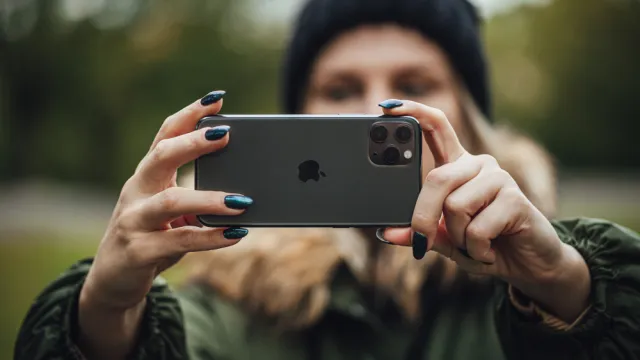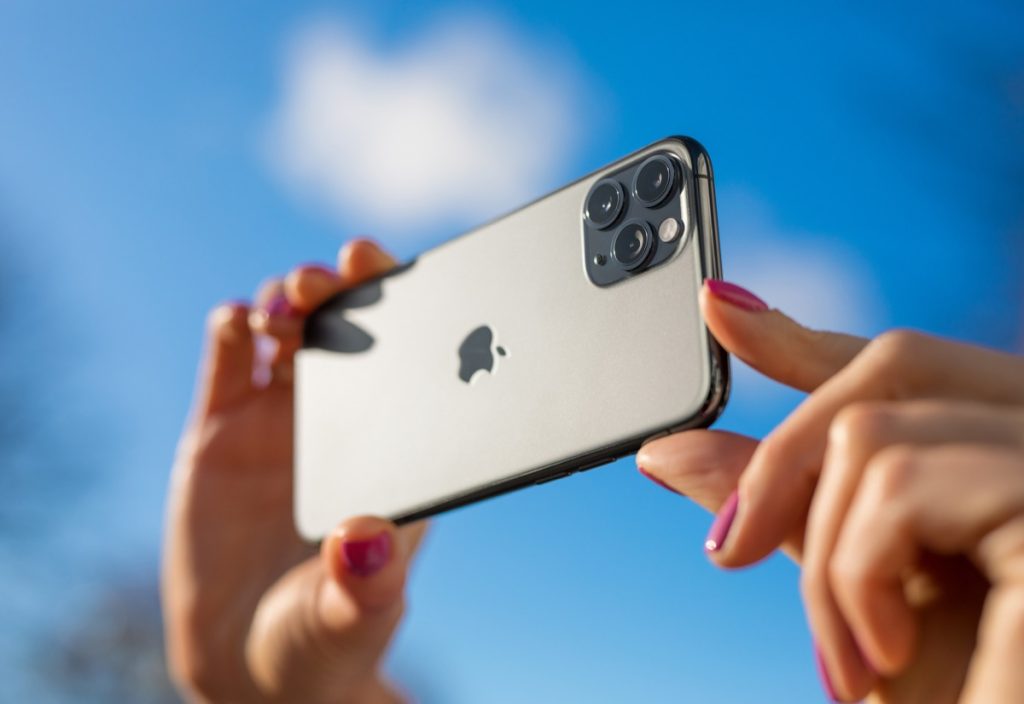Your iPhone Photos Could Be Permanently Deleted on July 26—How to Save Them

The old saying goes that the best camera is the one you happen to have with you. These days, this adage certainly applies to the smartphones in our pockets, which are always within reach whenever you need to take a few snaps. But if you’re concerned about keeping your special digital memories intact, you might want to take note—Apple just announced that some of your iPhone photos could be permanently deleted on July 26 if you’re not careful. Read on to learn how you can save them from getting wiped out.
READ THIS NEXT: Your iPhone Could Call 911 by Mistake Thanks to a New Feature, Users Report.
Apple is discontinuing an iPhone feature that could put your photos at risk.

Your digital picture archives have the built-in benefit of always being on hand when you want to show them off or peruse them. But according to Apple, a set of upcoming changes might mean that some of your iPhone photos could get deleted in a few weeks if you’re not careful.
The tech giant recently announced that it would be permanently winding down the My Photo Stream feature on July 26, which has been offered as a free form of cloud storage for pictures taken on Apple devices since 2011. The temporary safe-keeping space was intended to make it easy for users to access photos taken on their devices across their other gadgets, such as iPads, laptops, desktop computers, and Apple TVs by storing up to 1,000 image files for 30 days, according to Mashable.
Certain people could see their latest images wiped if they’re not careful.

Even though there’s still time to act, Apple has already begun the process of winding down the free service. The company says that it already stopped uploading new images to My Photo Stream on June 26 as part of the transition. That means anyone who hasn’t backed up their image library elsewhere after deleting them from their iPhone—or perhaps has recently changed devices and hasn’t updated their settings—could see a lapse.
“Any photos uploaded to the service before [June 26] will remain in iCloud for 30 days from the date of upload and will be available to any of your devices where My Photo Stream is currently enabled,” Apple wrote in its notice. “By July 26, 2023, there will be no photos remaining in My Photo Stream, and the service will be shut down.”
RELATED: For more up-to-date information, sign up for our daily newsletter.
Here’s how to ensure your iPhone photos are stored safely amid the coming changes.

Fortunately, the upcoming changes won’t wipe any of your images off your phone or other devices—even if they’re not backed up elsewhere.
“The photos in My Photo Stream are already stored on at least one of your devices, so as long as you have the device with your originals, you won’t lose any photos as part of this process,” Apple explains in its service notice. “If a photo you want isn’t already in your library on a particular iPhone, iPad, or Mac, make sure that you save it to your library on that device.”
To check which iPhone photos are in your stream and save any images at risk of disappearing, open the Photos app and tap the “Albums” button. From there, tap “My Photo Stream” and then the “Select” option before choosing which images you want to save before pressing the “Share” button and selecting “Save Image” to stash them on your device.
You can also enable other settings to safeguard your pictures automatically.

Of course, users who already back up their devices’ pictures using Apple’s iCloud digital storage service won’t have to worry about safeguarding their photos. The company said that users with the popular feature enabled “don’t need to do anything else” as their images are already stored remotely, calling it “the best way to keep the photos and videos you take up to date across all your devices and safely stored” moving forward.
Anyone looking to activate iCloud storage on their devices can do so by going to Settings, clicking on their name, and then tapping iCloud to see if the feature is switched “on” next to photos on their devices. Users get five gigabytes of storage space for their pictures and can then opt to increase it for a fee, 9to5Mac reports.
While the changes might seem inconvenient for some users looking to shore up precious hard drive space on their iPhone or iPad, switching to iCloud has some noted benefits. According to 9to5Mac, My Photo Stream never saved high-quality versions of photos at their full resolution and only worked with certain file formats.
If you’re both on a tight budget and low on digital storage space, experts also point out there are other options for stashing your images. Services such as Amazon provide unlimited free photo storage to Prime members, while Google offers 15 gigabytes of space free of charge, according to TikTok user Sarah Adekola, per The New York Post.